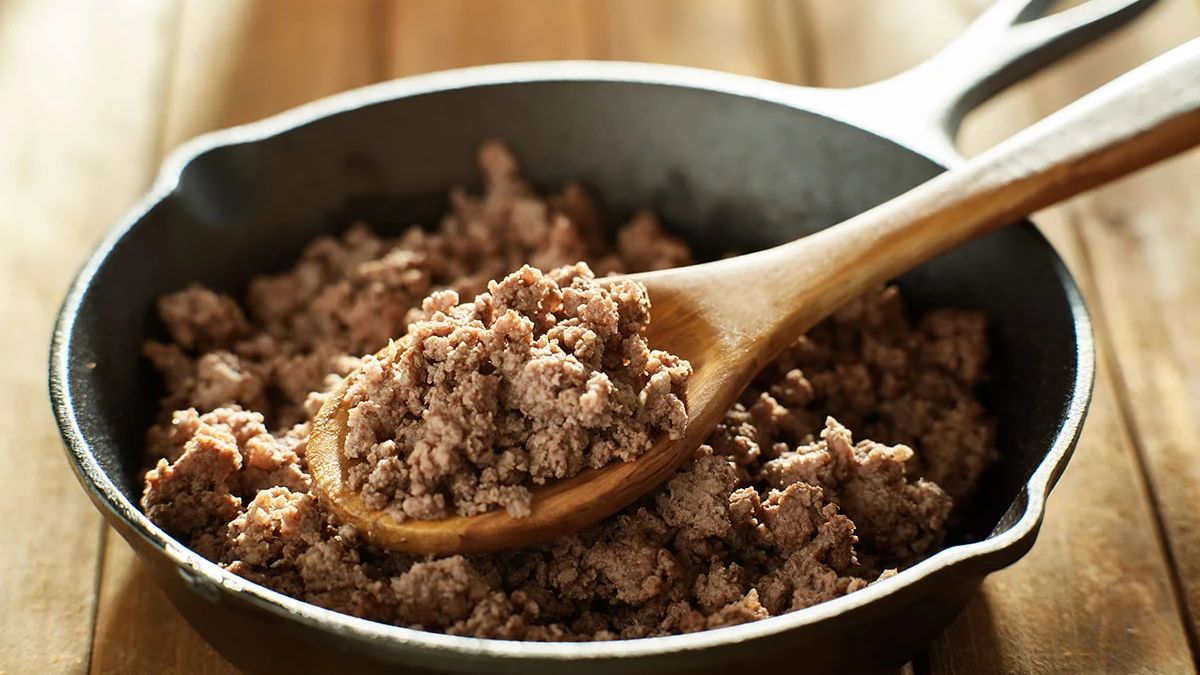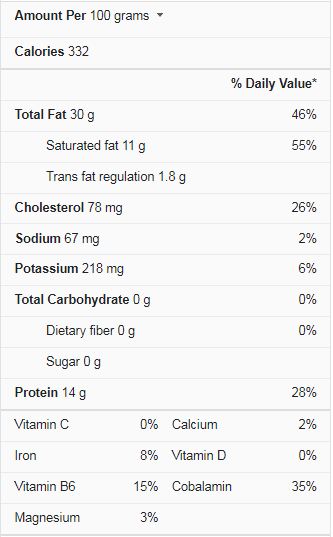Cooking ground beef is a technique that every home cook should have. And while it may appear simple, there’s a lot that can go wrong if you don’t use good technique. Have you ever wondered why your ground beef is more grey than brown? Continue reading to learn how to brown ground beef in a skillet to perfection. In addition, all of your ground beef questions can be answered by consulting our troubleshooting guide.
Ground Beef Nutrition Facts
How To Buy Ground Beef?
Tips For Cooking Ground Beef
Here are some best tips for cooking ground beef:
Put Cold Meat In A Hot Pan
When you take ground beef out of the fridge and place it in a hot skillet, the meat will quickly release its fluids. Allow your meat to come to room temperature for around 15 minutes before cooking for optimal results. However, never leave ground beef out for more than two hours at room temperature.
Overcrowded The Pan
Overcrowding the pan will only work against you in terms of getting that crisp, brown crust. Because the meat does not have enough contact with the pan, it will steam rather than sear. What’s the result? Ground beef that is wet and greyish. Thank you, but no thanks. If you’re preparing a lot of ground beef, cook it in stages or make sure you have a big enough skillet.
Use A Nonstick Pan
Okay, you can brown the ground beef on a nonstick skillet if you like. It’s practical. However, you’ll want to use cast iron or stainless steel for the most excellent sear. This is because nonstick pans do not hold heat and metal pans. Furthermore, not all nonstick pans can withstand the intense heat needed for browning meat. Use a little oil and make sure your cast iron is well seasoned to keep the meat from sticking in stainless steel or cast iron pans.
How To Cook Ground Beef?
The key to properly cooking ground beef is to avoid moving it around too much until it’s done and attractively browned—this aids in forming a beautiful crust on the meat. Before cooking the beef, allow it to come to room temperature on the counter for 15-20 minutes. I sauté it in cooking oil, generally olive oil because that’s what I have on hand, but any cooking oil would do. Browning is best done with olive oil, in my opinion. It’s critical to use a large pan. Non-stick does not appeal to me for this purpose. I prefer stainless steel or cast iron to nonstick because it gives the meat a better crust. It’s best to use a thick, heavy pan for this because it cooks more evenly. I flatten the beef into a large, thin burger patty after it’s in the pan. I wait for a crust to form before breaking it up and flipping it. Then I let the meat finish cooking before cutting it into even smaller pieces.
Get Great Flavors From Ground Meat
Meatloaf and hamburgers, two extremely wonderful home foods, persuaded me to investigate the possibilities of ground meat further. Ground meat’s light, loose texture readily absorbs add-ins, and its many surfaces are excellent at absorbing and conveying flavor—two reasons why it’s such a perfect medium for shaping into patties, “cushions,” and meatballs that make for quick and tasty evening dinners. Ground meat meals are sometimes criticized for being heavy, dense, dry, and monotonous. But, whether you’re working with ground beef, lamb, veal, chicken, or turkey, if you mix lightly and utilize a wet filler and generous seasonings, you’ll get soft, tasty results.
Full Flavor, Tender Texture
Patties, meatballs, and cushions are delicious because they stay moist and juicy, and if you cook the patties at the correct temperature and time, the juices will be retained, and the meat will not dry out. All those sliced surfaces release their juices when it’s time to eat. After a bit, you’ll be able to feel for doneness by pressing a fingertip on the ground meat; it should have a slight spring to it, indicating that it’s cooked through but still juicy. Grinding beef creates a rich texture by breaking down solid fibers and connective tissue. In general, the cuts utilized for grinding (such as shoulder) are less delicate, to begin with, notwithstanding their deliciousness. However, the cooked result is delicious and soft because the lengthy muscle fibers are finely ground in the grinding process.
Conclusion
If you’re fortunate enough to have an excellent butcher, like I have, who will grind the meat fresh for you, that’s the finest. To acquire a grind that isn’t too fine, specify “once ground” at the butcher. That way, you’ll obtain the most delectable outcomes. If you must buy packaged ground meat, read the label carefully and select meat that has been ground as soon as possible, preferably the same day. Because ground beef degrades faster than solid slices, utilize it as soon as possible. I shave off the outside surfaces with a very sharp knife on an immaculate cutting board to ensure perfect cleanliness.



